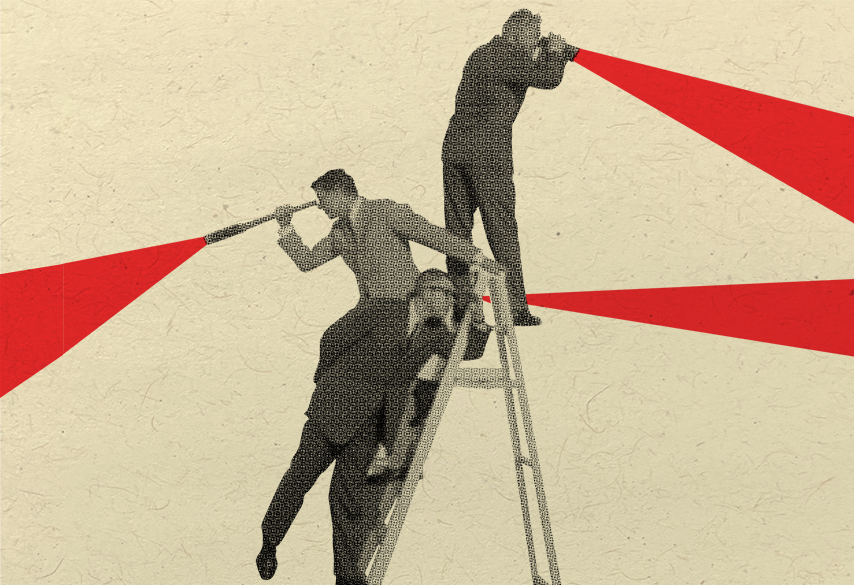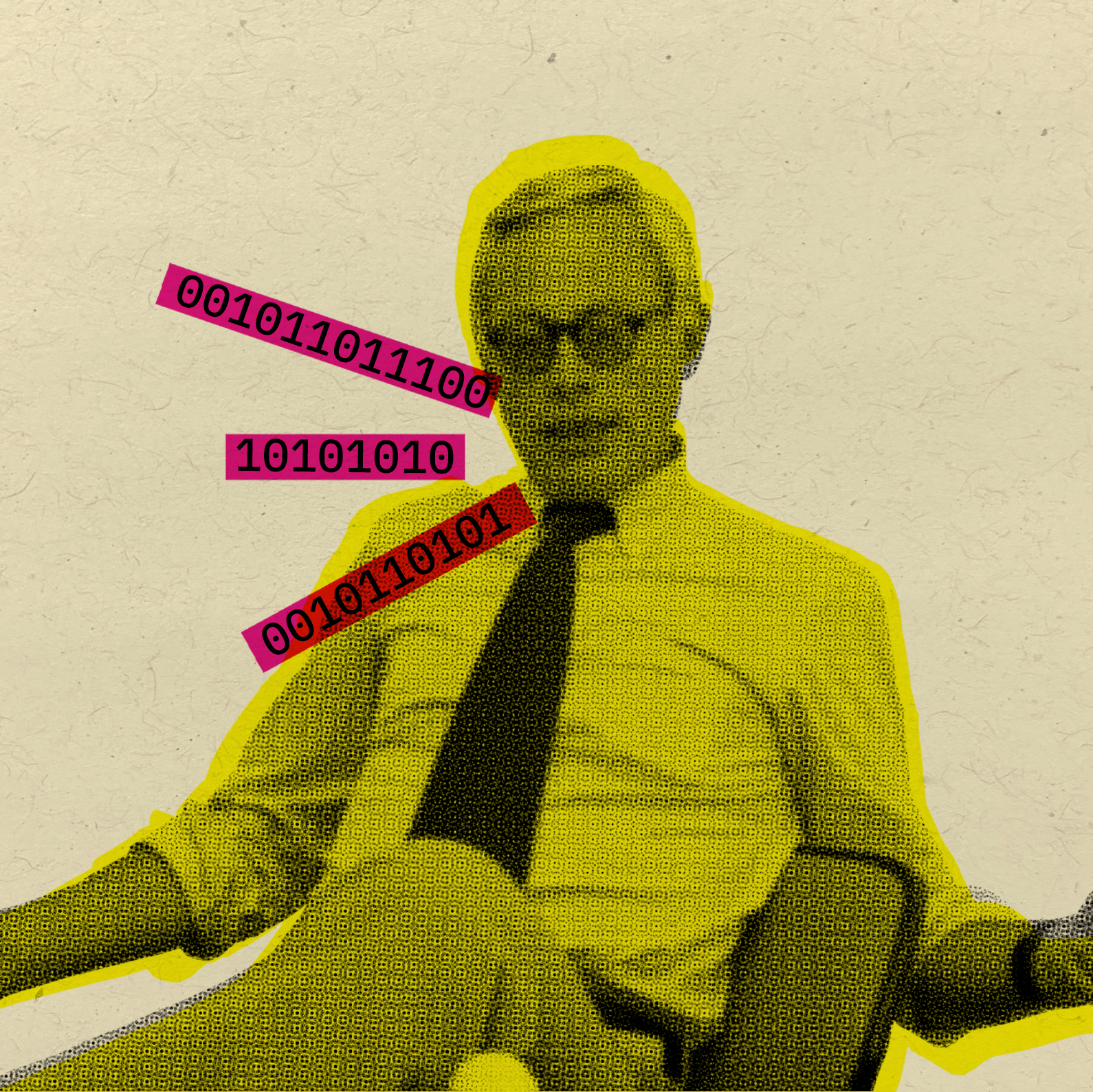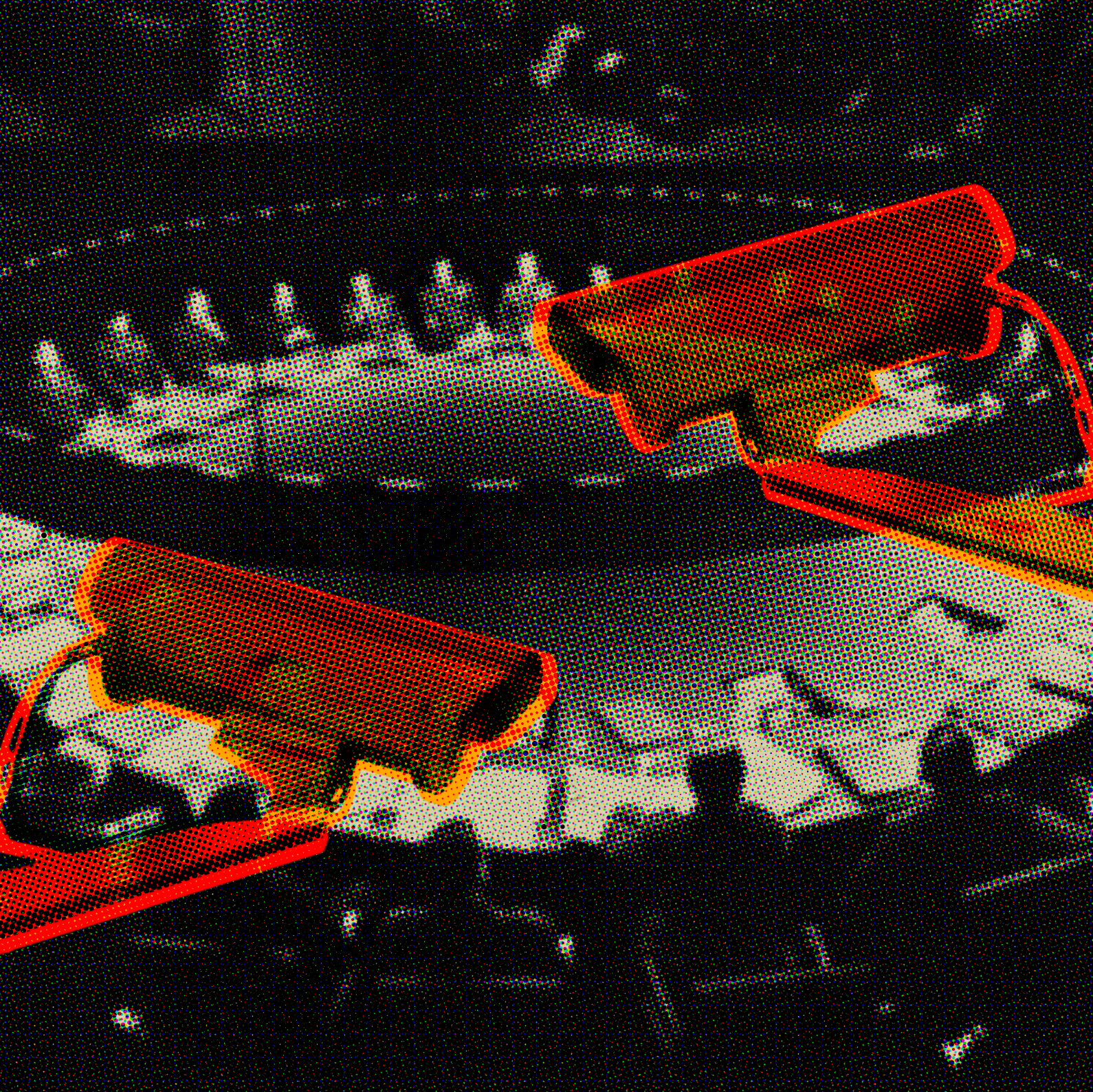From widely-discussed concerns over induced paranoia, to striking journalistic findings on potential privacy breaches, peer-to-peer surveillance technologies like Ring and Citizen are not new to public scrutiny. Ring, Amazon’s residential security system, offers smart home devices and a complimentary social network. Citizen, a mobile app founded by programmer Andrew Frame, uses alerts and live broadcasting to inform users of localized incidents. Critics underline that the proliferation of these products in the past few years indicates a growing obsession with constantly watching others, under the guise of maintaining safety. In this manner, Ring and Citizen are often categorized alongside each other as digital tools driven by perpetual suspicion and imminent danger.
While this aggregated understanding correctly emphasizes distressing trends in modern sousveillance, the differences between the two technologies can provide additional critical insight. Analyzing the unique contexts of both Ring and Citizen reveals their intersections and overlaps; ultimately affirming their implication within a larger neoliberal system that operates on fear and profit-making.
The Suburb and The City
At the outset, Ring and Citizen can be regarded as sousveillance technologies developed for fundamentally opposite environments. The American suburb, Ring’s stronghold, finds its roots in homogeneity, segregationist practices, and Cold War anxieties over an impending attack from “the enemy”. Its identity has been built upon a promise of security, sanctity and privacy for its constituents. Keli Gabinelli, in her article “False Alarm”, illustrates that the emergence of a neoliberal paradigm following the 1970s resulted in security becoming a matter of individual responsibility. 1 Gabinelli, Keli. "False Alarm." Real Life, September 30, 2019. https://reallifemag.com/false-alarm/. Since then, all threats to sanctity have been approached with peer-to-peer surveillance, where the value of privacy isn’t promised to anyone seemingly encroaching the bounds of a private property. The suburban home’s door then becomes a crucial site, protecting everything behind it from the unknowns on the other side. In the form of hardware, Ring latches itself onto this very barrier and becomes an interlocutor between the sacred inside and the scary outside.
Away from the sprawling cul-de-sacs, Citizen operates in the American city; a place described by writer and activist Jane Jacobs as an ecosystem “with life at its most complex and intense.” 2 Jacobs, J. (1961). The Death and Life of Great American Cities. Random House. In the mid-century, white flight to the suburbs, partially motivated by an aversion to racial integration, accelerated systemic and structural issues within cities. Being deemed as ‘crime-ridden’ and ‘decaying’, urban centers were met with rigorous renewal plans that disproportionately harmed Black and Brown communities. Jacobs famously led the charge in opposing many such redevelopment projects in downtown Manhattan, with a grassroots approach that prioritized community building and organizational power. In her seminal book, The Death and Life of Great American Cities, she called for residents to band together and “keep their eyes on the street” to maintain social order and safety, setting a precedent for the neighborhood watch.
The act of specifically watching one’s surroundings for instances of disorder invariably creates a state of constant suspicion and fear.
Over 70 years later, Citizen has framed itself as a digital manifestation of this method and strives to become a “global safety network of people protecting each other.” 3 Cox, Joseph, and Jason Koebler. "'FIND THIS FUCK:' Inside Citizen’S Dangerous Effort to Cash In On Vigilantism." Motherboard, May 27, 2021. https://www.vice.com/en/article/y3dpyw/inside-crime-app-citizen-vigilante. The app, currently operating in 60 American cities, is driven by horizontal relays of information, including crowdsourced reports and dispatches gathered from police scanners. Its use is predicated on the idea of concerned civilians striving to protect their local communities through observation, documentation and reporting.
In reality, Citizen and the many other de facto interpretations of “eyes on the street” do little more than exacerbate paranoia within communities. The act of specifically watching one’s surroundings for instances of disorder invariably creates a state of constant suspicion and fear. This condition extends beyond a localized scope: much has been said on how the amplified threat of terror following 9/11 and subsequent ongoing crises have resulted in a large-scale generalization of emergency, exception and anxiety in the last two decades. 4 Ellcessor, Elizabeth. 2022. In Case of Emergency: How Technologies Mediate Crisis and Normalize Inequality. NYU Press.
Such an environment is further complicated when recognizing the role of embedded racial biases, whereupon Black and Brown people are more likely to be deemed as suspicious in the public sphere: a space, described by author Simone Browne, as being “shaped for and by whiteness.” 5 Browne, Simone. 2013. Dark Matters: On The Surveillance of Blackness. Duke University Press. Jacobs herself has been criticized for her inability to address race in the context of housing and the commons, and the urgent and all-encompassing modalities of both Ring and Citizen are not any better at doing so. Neighbors, Ring’s own neighborhood watch app with doorbell footage, has developed a culture “obsessed with crime and self-policing”, with users often racially profiling recorded individuals 6 Haskins, Caroline. "How Ring Transmits Fear to American Suburbs." Motherboard, December 6, 2019. https://www.vice.com/en/article/ywaa57/how-ring-transmits-fear-to-american-suburbs. Similarly, Citizen was initially launched under the name “Vigilant”, and was subsequently taken off the Apple app store after many cited risks of “physical harm to people” and pointed out the racialized vigilantism that the tool could greenlight.
Stability and Shakiness
The intended environments of both apps, be it the enclosed house or the open city commons, subsequently influence the mobility of the key sousveillance apparatus: the camera. The aforementioned barrier of the suburban home --the door -- serves as a place of adherence for Ring’s technology. The point of view is immovable and continuous; anything that comes within the range of a ‘secured’ home has no choice but to be recorded. The camera’s 160º fisheye lens offers some additional peripheral insight and an infrared option ensures documentation at all times of day. Ring also boasts 1080p resolution for all its products, and in their own words, allows users “to see absolutely everything going in and around” one’s home. The resulting footage is clear and established, echoing Liat Berdugo’s notion that “the stability of an image is its power”. 7 Berdugo, Liat. "Spectral Power." Real Life, August 22, 2017. https://reallifemag.com/spectral-power/.
Contrary to Ring’s almost paternalistic secureness, videos on Citizen are shaky and hand-held. Whereas Ring’s stable doorbell camera offers an inward residential safety, Citizen leverages the smartphone camera as a vector for information in the public square. Its mobility is its characterizing feature, and conjures values of diligence, duty and initiative. The app’s constant calls for users to “Go Live” and report on nearby incidents contribute to a heightened sense of immediacy and place. As such, all footage from Citizen is intrinsically tied to one’s physical position and larger positionality when navigating an urban environment. This is demonstrated through people streaming protests and using the app to “stay ahead of planned police action”. Notably, Citizen saw record numbers of downloads during the waves of demonstrations against police brutality in 2020. 8 Molla, Rani . "From Citizen to Signal, the Most Popular Apps Right now Reflect America’S Protests." Vox. June 30, 2020. https://www.vox.com/recode/2020/6/3/21278558/protest-apps-signal-citizen-twitter-instagram-george-floyd. In such cases, the unique contexts of its users the app allows for it to expand beyond a crime-tracker and be interpreted as a tool for solidarity.
However, Alice Riddell, writing on the unexpected uses of Citizen in Brooklyn, observes how the company’s murky relationship with local law enforcement may undermine this flexibility. 9 Riddell, Alice. "Intersecting Positionalities and the Unexpected Uses of Digital Crime and Safety Tracking in Brooklyn." Social Inclusion 11, no. 3 (2023). Accessed November 20, 2023. https://doi.org/10.17645/si.v11i3.6615. She notes that Bill Bratton, an ex-police commissioner in the NYPD, serves as an executive on the app’s board. In his time as commissioner, Bratton implemented the controversial broken windows policing theory that took a zero-tolerance approach to “public disorder”, and resulted in racialized arrests and increased brutality. 10 "Shattering Broken Windows." Columbia Law School. Columbia Law School, April 8, 2015. https://www.law.columbia.edu/news/archive/shattering-broken-windows. Increased cooperation with law enforcement challenges Citizen’s ability to exist as a horizontal infrastructure, and especially so for communities that are routinely targeted by the police.
As sousveillance systems expand their networks, the positions of being “behind the camera” and “in front of the camera” may find themselves in a constant state of flux.
Ring’s cooperation is far less obscured: Caroline Haskins reported in Motherboard that the company had partnered with over 600 police departments in 2019. In certain partnerships, police departments maintained Ring camera registries and could legally obtain footage recorded from installed systems. Privacy-tradeoffs are further amplified when recognizing the possibility of anyone locating cameras from the content posted on Neighbors. A data investigation conducted by Gizmodo revealed that all posts were accompanied by “hidden coordinates” that were essentially visible to any Ring user; these coordinates could then be used to pinpoint Ring cameras and their connected homes. 11 Cameron, Dell , and Dhruv Mehrotra. "Ring’S Hidden Data Let Us Map Amazon's Sprawling Home Surveillance Network." Gizmodo. December 9, 2019. https://gizmodo.com/ring-s-hidden-data-let-us-map-amazons-sprawling-home-su-1840312279. The examination also found that several cameras were closely situated to sensitive locations that largely benefit from geographic discretion, like abortion clinics and immigration offices. Even if the decision to own a Ring camera may be individually made, the general nature of sousveillance entails that everyone around a ‘secured’ property is unwittingly a part of that decision. 6 Haskins, Caroline. "How Ring Transmits Fear to American Suburbs." Motherboard, December 6, 2019. https://www.vice.com/en/article/ywaa57/how-ring-transmits-fear-to-american-suburbs.
Such gaps in data privacy and obfuscated law enforcement relationships indicate that those who believe they are “watching” aren’t necessarily free from being “watched” themselves. Citizen users sharing footage of their surroundings may find themselves recorded as a part of someone else’s livestream. Ring users uploading videos from their doorbell cameras may unwittingly disclose their home locations on social platforms. As sousveillance systems expand their networks, the positions of being “behind the camera” and “in front of the camera” may find themselves in a constant state of flux.
Deceptive Interfaces and our Neoliberal Hell
Riddell uses the concept of “perpetual opportunism” when speaking on the modern technical state of always being connected and supplied with information. Both Ring and Citizen exemplify this condition, giving one the ability to obtain a gaze of their surroundings without looking away from their phones. The apps go so far as to reach out to their respective users and notify them if something within their vicinity might warrant their immediate attention. In the case of Ring, innocuous incidents (like a crawling bug) result in the same notice, and can gradually render urgent alerts into digital nuisances. Similarly, Citizen’s repetitive notifications are often the subject of jokes on other social platforms, with people emphasizing its overwhelming barrage of decontextualized information.
Citizen’s live-streaming feature also allows users to spectate and comment on incidents as they unfold in real time. The feature includes chats and emoji reactions, creating an interactive experience that blurs the line between urgently broadcasted material and content serving to lightly entertain. These voyeuristic appeals form a crucial infrastructure for the app, with Citizen reportedly paying people upwards of $25 an hour to track and stream events, and create more content for it to disseminate. 12 Vincent, James. "Vigilante App Citizen Is Paying People to Livestream Crime Scenes and Emergencies." The Verge. December 9, 2019. https://www.theverge.com/2021/7/27/22595648/citizen-app-crime-scene-paid-live-streamer-nyc-la-emergencies. The app’s primary feature is a dark map scattered with some yellow and red dots, representing isolated recent incidents. However, a majority of the map is populated with smaller grey dots that indicate past incidents, which are only viewable for those upgraded to Citizen Plus. It takes very little time on the app to discover that many of its front-facing features are essentially locked unless a user opts to pay $19.99 a month. Notably, the map offers a view of registered offenders that immediately prompts an “Upgrade” popup upon interacting. At the time of writing this article, the app affixed a countdown ticker at the top of the screen, offering a Black Friday discount to its users for a limited amount of time.
Both [apps] exist as monetized systems that exploit real-life incidents and employ deceptive interfaces.
Unsurprisingly, Ring’s mobile counterpart Neighbors does not fall short of selling products as well. Compared to the pressing nature of Citizen’s monetized features, Ring’s approach feels lighter and appeals to typical consumerist sensibilities. At the top of the app, users can scroll through a carousel of features: a tab for community resources, on issues like mental health and lost pets, is placed next to a tab advertising the best Amazon Prime deals of the week. The community feed consists of uploaded clips that display a footer detailing the kind of Ring product used to make the recording. Users can click the footer to buy the detailed product, in the case that a post compels anyone to make a purchase.
Between content from actual users, the community feed often features clips of footage posted by a verified “Neighbors Team”. These videos range from lighthearted gaffes (such as people slipping on ice and laughing it off) to acts of heroism (like that of a neighbor alerting a family of their burning garage). All clips effectively depict Ring as a tool with a boundless capacity for positivity, with the recorded footage existing as unarguable proof. The company even maintains a YouTube channel, with saccharine videos that rack up thousands of views. With this, Ring has found a way to create viral content produced by its customers, which can then be used to market their own products. These kinds of labor loopholes aren’t new to Amazon. Perhaps its most controversial use of recorded clips comes in the form of a syndicated television series called “Ring Nation”. Legal scholar Andrew Guthrie Ferguson characterizes the show as Amazon’s attempt to normalize “the business of selling surveillance as a service” 13 Uhl, Jordan. "Our Suburban Panopticon." I Hate It Here And Never Want To Leave. August 18, 2022. https://neverleave.substack.com/p/our-suburban-panopticon?utm_source=%2Fsearch%2Fring&utm_medium=reader2.




